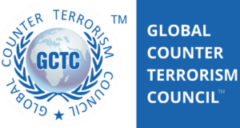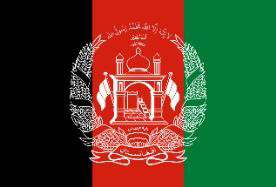INTRODUCTION
The Afghan state was made by the opponent pioneer powers, British-India and the former Soviet Union. Afghanistan borders have existed for the past century as a territory which has :
“I dream of a day, while retaining our national identities, one can have breakfast in Amritsar, lunch in Lahore and dinner in Kabul. That is how my forefathers lived. That is how I want our grandchildren to live”
Former Prime Minister – Manmohan Singh
ABSTRACT
Each country needs economic cooperation and political stability and a foothold in the international system where it has a say and is recognised for a straightforward reason: progress for the country in all spheres – economic, political, human development, infrastructure, education etc. There are many forces which come into play when one talks about Afghanistan as a region, the geopolitical factors; the relation between the Islamic world and the west; mutual relations between Pakistan and Afghanistan; the role of illegal rise of the economy through drug cartels and above all aspirations of citizens of Afghanistan.
Afghanistan is a place that has been tossed by unrest for over three decades.1 It has been used as a battleground for many conflicts. There are many forces which come into play when one talks about Afghanistan as a region, the geopolitical location, the relation between the Islamic world and the west and the role of illegal rise of the economy. But away from the international system Afghanistan has different ethnic groups and minorities, which leads to a twisted war other than the Soviet Invasion or the US invasion or first and the second Anglo-Afghan war.
GEOGRAPHICAL LOCATION
Afghanistan geological landforms divide and reinforce separation amongst the Afghan people. Afghanistan mountains divide the country into four distinct zones that support different types of economic livelihood, including agriculture. Within each zone, the terrain is highly compartmentalized, which makes travelling, contacts with other people and political, social unity are difficult. Afghanistan’s mountainous terrain dominates the cater of the country and is one of the most prominent features.
The country’s watershed and water system have sustained for distinct regions: Herat in the west, Kandahar in the south, Mazar-i-Sharif in the north and Kabul-Peshawar area in the east.
2 Shinwari, S. (2012), “The Importance of Durand Line Recognition”, The Khaama Press News Agency, Available at – https://www.khaama.com/the-importance-of-durand-line-recognition-313/
3 Booker: ‘Right-Wing Extremists…Behind the Majority of https://www.cnsnews.com/news/article/cnsnewscom-staff/booker-right-wing-extremists-behind-majority-terrorist-attacks-country
The area along the Afghanistan-Pakistan border (Durand Line) opposite Peshawar and the north-west frontier province (NWFP) constitutes the fifth region.
Herat – The west region, with its major city of Herat is located next to the Iranian border and exhibits Iranian cultural influences. It is arid and draws sustenance from the Harirud River that flows through the lowlands from the mountainous source. Sunni and Shi’a Persian speaking ethnic groups make up the population, these people have historical ties to the silk route joining China and Iran, Both international trade and agriculture have ensured the regions survival.
Kandahar – Helmand river is the main attraction in the southern region of Afghanistan that is Kandahar. Vastly wheat, fruits and opium (illegal product for trade) are grown here. The region is dominated by desert and inhabited only by nomadic tribes. The regions dominant ethnic group is Pashtun. The city of Kandahar serves as a major trade centre for goods moving between India towards Kabul.
Mazar-i-Sharif – Mazar-i-sharif is the forth largest city in Afghanistan. Its border touches with Uzbekistan, Turkmenistan and Tajikistan. It is held sacred as the alleged burial place of Ali , son-in-law and cousin of Muhammad a noted mosque of Ali is in the city. During the Afghanistan War , the city was an important link on the line of defences guarding the strategic road between Kabul and Termez in Soviet Uzbekistan, and in the subsequent civil war it was the key to the control of Northern Afghanistan and the defence of Kabul. Mazār-e Sharīf is located in one of Afghanistan’s most fertile regions, extensively irrigated by the Balkh River and produces cotton, grain, and fruit. The town’s industries include flour milling and the manufacturing of silk and cotton textiles. The base at Mazar-e-Sharif is home to the Afghan National Army’s 209th Corps, responsible for providing security to most of northern Afghanistan, including Kunduz province – which has seen heavy recent fighting.
4 Available at – https://saylordotorg.github.io/text_world-regional-geography-people-places-and-globalization/s11-07-central-asia-and- afghanistan.html
Kabul – Kabul is the capital and the largest city of Afghanistan. It lies along the Kabul River in the east central part of the country. In the 13th century the Mongol invader Genghis Khan inflicted considerable damage on the city. Kabul was the capital (1504–26) of the Mughal dynasty, under Babur, and it remained under Mughal rule until 1738, when Nadir Shah of Iran took it. And since 1776 Kabul has been the capital.
Afghanistan is predominantly a mountainous desert which has been considered as an extension of the Iranian plateau. The Hindu Kush range separates the north from the south, 200km long from the Iranian border and extended up to the extreme north east. North and northeast Afghanistan feature high mountain pass that flows into central Asia’s steppes, granting access to Pakistan and India to the east. The northern portion of Afghanistan connects to Turkmenistan.
Afghanistan borders have existed for the past century as a territory that has witnessed shifting empires from one time to another, with Persian, Central Asia, the Indian subcontinent and the Middle East, thus making this country’s history interesting. One can rebuild its history and its exciting intermingling of empires and ethnic groups which have been lost due to the long- trodden war since 1979 (invasion of Soviet Union). The Afghan nationalism occasionally bloomed with stories of empires’ defeat in humiliation who tried their luck against the Afghans.
THE ETHNIC GROUPS
In 1992, Minority Rights Group published a report in the form of a book named – Afghanistan: A nation of minorities that stated that there is no ethnic group that makes half of the population.
Ethnic group was first used as Groupe Ethnique by a French anthropologist DOLLOT. Till 19th century the term ethnic group did not exist, thanks to the foreign academicians. They started dividing the people within the country based on sect, language, culture and geography.
One of the astonishing facts is that the ethnic groups which exist, neither of them have separatist aspirations, nor do they have contention over resources. There are a couple of uniting factors between the groups which can bridge to good governance in a fragile democracy, but the dividing factor sets in with the linguistic issues. This patchwork of ethnicity in the country which hampers the ethnic unity and a uniform national culture can act as a bridge rather than a barrier.
Ethnicity is an unavoidable factor in Afghanistan, just like in India, and also the common factor is that they all seek security and governance. If the country wants to get rid of the ethnic trap, they need to address rational ethnic representation in fragile democracy and eliminate de- politicization of ethnicity. The divide is between the North, and South Afghanistan that is north is linked with Central Asia and south is linked with Afghanistan, NWFP and Baluchistan.




